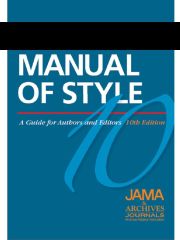These near-synonyms actually mean slightly different things—but teasing out the subtleties requires a bit of hairsplitting.
To drive the first wedge, distinguish between ability and capacity. Ability denotes actual (as opposed to potential) skill that may be either native or acquired.1 On that point, Merriam-Webster’s Collegiate Dictionary cuts right to the pith, stating that ability is “natural aptitude or acquired proficiency.”2(p3) Capacity, on the other hand, denotes the potential to develop a skill, a native characteristic that one either does or does not have and that cannot be acquired or developed.3 (Language purists might maintain that capacity should be used only to refer to space or volume, but its use to refer to aptitude is well accepted.) Moreover, whereas ability and capacity can each refer to either physical or mental aptitude, capacity is more commonly used in connection with mental aptitude—in particular, to “mental or intellectual receiving power; ability to take in impressions, ideas, knowledge.”4
Persons attempting to keep these subtleties straight might, like William Caxton, well be inclined to exclaim, “My capacity is not sufficient for the proper handling… of such subjects”4—but things get more complicated yet. When differentiating ability from capacity, some language users distinguish between whether a sentence is referring to persons/animals or to things (with ability often used with persons and capacity most often used with either persons or things)1; however, this distinction is rapidly waning, and both words are commonly used to refer either to animate or to inanimate agents. For example, both words are commonly used when referring to inanimate agents such as physiological mechanisms (eg, “The ability/capacity of this pathway to promote….”) or anatomical structures (eg, “The ability/capacity of the liver to clear the body of these toxins….”).
Capability denotes “the quality or state of being capable”2(p182) as well as “a feature or faculty capable of development.”2(p182) Thus, capability comes closer to ability in meaning. However, capability further denotes a unique fitness for achieving a defined end,1 and this specificity makes capability a good choice in contexts requiring a greater degree of precision. So, while capability is all too often simply used as a pretentious substitute for ability—a 10-dollar word lobbed in when a 1-dollar word would have gotten the job done—capability might have been the better choice in the above examples (“The capability of this pathway to promote….”; “The capability of the liver to clear the body of these toxins….”). Furthermore, language users often use capability in place of capacity, likely led astray by the “cap” with which they both begin. However, whereas the use of capability in place of ability is becoming more accepted, particularly when referring to a unique aptitude to accomplish a particular end, the use of capability in place of capacity is usually incorrect.
The bottom line:
Ability = Actual skill, either mental or physical; native or acquired.
Capacity = Potential to develop a skill, usually mental; native, as opposed to acquired.
Capability = Unique fitness for a defined end; sometimes may be used in place of ability, but its use in place of capacity is incorrect.—Phil Sefton, ELS
1. Ability, capacity, capability. Merriam-Webster’s Dictionary of Synonyms. Springfield, MA; Merriam-Webster Inc; 1984:4.
2. Merriam-Webster’s Collegiate Dictionary. 11th ed. Springfield, MA: Merriam-Webster Inc; 2003.
3. Ability, capacity. In: Bernstein TM. The Careful Writer: A Modern Guide to English Usage. New York, NY: Athaneum; 1985:5.
4. Capacity. The Compact Oxford English Dictionary. 2nd ed. Oxford, England: Oxford University Press; 1991:209.

